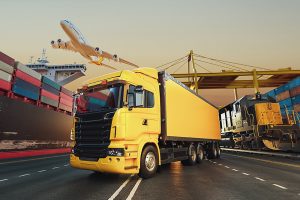Like many countries around the world, Australia is starting to reshape its transport infrastructure in hopes of accommodating population growth, urbanisation, and environmental sustainability. With the right combination of investment opportunities, technological advancements, and strong regulatory/policy leadership, Australia is gearing towards an AI-driven transport sector in the future.
History has shown that Australia is keen on developing new technologies. Couple that with the eagerness of its transport authorities to embrace change and you’re looking at an ideal market where innovation and refinement can thrive.
Currently, there are 15 automated and connected vehicle trials underway. These trials are backed by extensive research and development (R&D) infrastructure from well-renowned research centres like the Australian Integrated Multimodal Ecosystem (AIMES), the iMove Cooperative Research Centre, and the national science agency CSIRO’s Data6, a global leader in engineering and data science research.
Having strong government support at all levels makes a huge difference in terms of implementing intelligent transport systems (ITS) in automated vehicles. Australia has shown commitment to this by spending over AUD 200 million on GPS and satellite technology along with releasing bandwidth for dedicated Cooperative ITS (C-ITS).
Such developments are helping to stimulate activity and investment from automotive OEMs, transport companies, and local/international firms. Companies like Tesla, BMW, Mercedes-Benz, Volvo, and Hyundai are all active in Australia which cements the country’s position as a global player in transport technology.
The future transport and mobility industry in Australia is expected to grow significantly over the next few years, with potential revenue of up to AUD 16.08 billion in 2025. These potential earnings give greater insight into the capability and investment opportunities in Australia across its major sub-sectors: Intelligent Transport Systems, Connected and Automated Vehicles and Mobility as a Service.

Three main sectors of future transport and mobility
The future transport and mobility sector are seen as a transition from internal combustion engines to electric power trains, transportation to mobility, and ownership to usership. The three key sectors within the Australian future transport and mobility are:
- Intelligent transport systems (ITS) – Developing and deploying advanced communication and information technologies allows for a safer and more efficient means of transportation for both public and private transport modes.
- Connected and automated vehicles (CAVs) – Vehicles that are capable of communicating with each other through wireless networks. This includes being able to communicate with other road users, infrastructure, and higher levels of automation to complete driving tasks like changing lanes, steering, and braking.
- Mobility as a service (MaaS) – The transition of car and ride-share into a user-centric mobility service provides plenty of benefits for public transportation as well as first and last-mile delivery options.
Australia has shown their commitment to utilising these technologies to better improve the safety, efficiency and sustainability of its transport system. The country offers plenty of opportunities for domestic and international companies who want to research, develop, and trial innovative transport technologies.
Market outlook
Back in 2016, the Australian future transport market was valued at AUD 211.2 million and is expected to earn more than $16 billion in revenue by 2025. Meanwhile, the cellular connectivity market for passenger cars was valued at AUD 117.8 million in the same year. Regulatory reform balances safety with newer vehicle technologies to allow for easier development, adaptation, and implementation.
Innovation highlights:
- Baraja, a Sydney-based vision systems manufacturer, has developed a new 3D machine vision system for CAVs using LiDAR technology (light detection and ranging).
- Tritium, an electrical equipment manufacturer in Australia, is supplying world-leading electric vehicle charging infrastructure to North America and Europe.
- Seeing Machines, one of the world leaders in human-machine interaction, is collaborating with Volvo Trucks Australia, Ron Finemore Transport and Monash University to develop the industry-leading Cooperative Research Centre program. This program aims to study heavy vehicle driver behaviour in a naturalistic on-road environment.
- Major OEM carmakers and suppliers such as Volvo, Lexus, Mercedes-Benz, Lexus, and Audi are trialling semi-autonomous vehicles on Sydney and Melbourne’s intra-city motorways.
- Automated vehicle providers such as Arrigo, EasyMile, Local Motors, and Navya are trialling and demonstrating new technologies in collaboration with Australian universities, local companies and transport authorities.
Why choose Australia to invest in developing modern transport solutions?
There are plenty of reasons why investors consider Australia as a major player in developing modern transport solutions:
- Australian future transport market set to earn more than AUD 16 billion in revenue by 2025
- The iMove cooperative research centre includes 44 industry, government and research partners
- Future Transport Digital Accelerator launched by Transport for NSW
- Nationally consistent automated vehicle regulation to come into play by 20205
- 15+ ongoing connected and automated vehicle trials with several other trials underway
- Supportive communications like developing 5G infrastructure, dedicated bandwidth, and upgrading satellite positioning
- Transport authorities showing full commitment to open datasets for commercial applications
